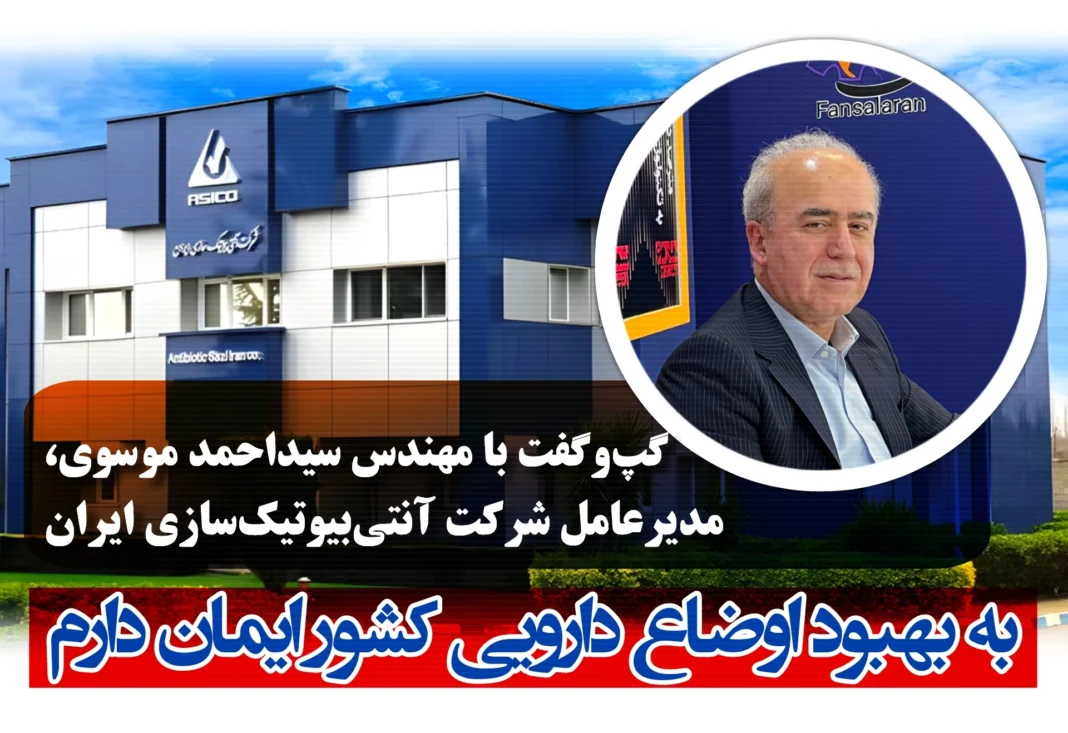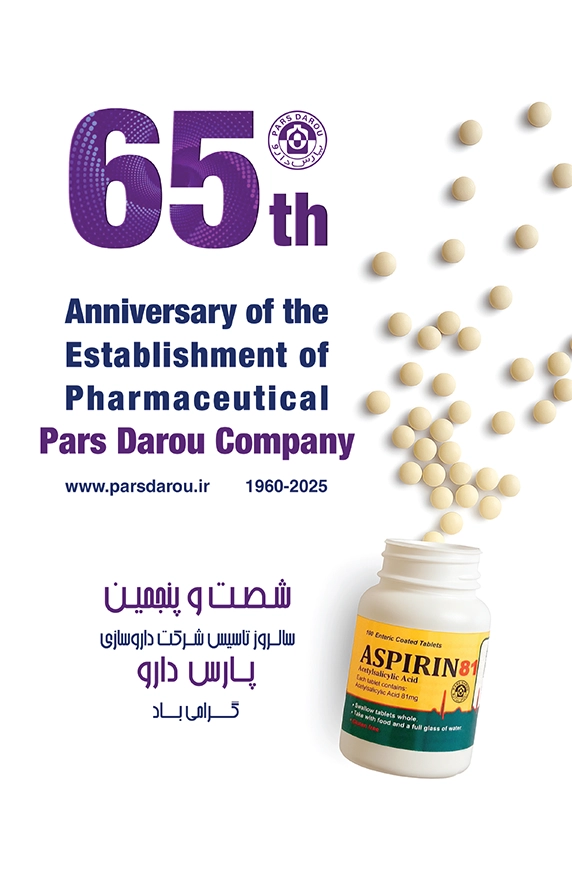A Conversation with Engineer Seyed Ahmad Mousavi, CEO of Iran Antibiotic Company
Engineer Seyed Ahmad Mousavi told Fansalaran: I extend my heartfelt appreciation to all professionals in Iran’s pharmaceutical industry who, despite economic hardship and a severe lack of liquidity and working capital, continue to strive relentlessly to prevent drug shortages in our beloved country. I am hopeful that in 1404 (2025), with serious obstacles removed, pharmaceutical companies and holdings will make significant strides in production, product quality, technological modernization, and GMP-standard upgrades. I especially believe that our own TPICO Holding, under the leadership of Dr. Naderi Alizadeh — a seasoned and capable pharmaceutical executive with extensive supply chain experience — will soon reach its rightful and prestigious position. In fact, even within this short time, we have already seen notable and balanced improvements.
As you may know, Iran Antibiotic Company is majority-owned by TPICO. The company was established in 1995 to support Iran’s pharmaceutical infrastructure by producing essential APIs. Production officially started in 2001 with penicillin derivatives. Under Dr. Naderi Alizadeh’s previous leadership, the company saw excellent progress — a path we have continued and expanded upon. Our company’s recent performance, as seen in the Codal system, speaks for itself.
Strategic Pillars of Iran Antibiotic Company:
- Striving for greater API self-sufficiency using domestic expertise and academic collaborations.
- Scaling production capacity through process optimization and modern equipment.
- Utilizing cutting-edge biocatalytic and enzymatic technologies in antibiotic and generic drug manufacturing.
- Rebuilding production sites per GMP and pharmaceutical industry standards.
- Renovating supporting units to ensure continuous production.
- Prioritizing stakeholders such as employees, the environment, and communities as part of a sustainable development strategy.
Iran Antibiotic Company became a publicly traded company on the Iranian OTC market on February 7, 2022, under the ticker BIOTIK. With full Codal transparency, 25% of its shares are offered to the public and market-maker funds. The IPO was priced at IRR 22,511 per share, and shares now trade around IRR 30,000 — a sign of investor trust and satisfaction.
Production Growth: In the past five years, annual Amoxicillin output increased from 450 tons to 1,100 tons — now exceeding national demand and enabling export opportunities. Cephalosporin (Cephalexin & Cefixime) capacity rose from 120 to 350 tons — a near 300% increase. This capacity expansion was achieved cost-effectively thanks to our capable team. Other recent product expansions include Azithromycin, Valsartan, Sitagliptin, Acyclovir, and Quetiapine.
Solvent Innovation: We reduced reliance on imported solvents (like acetone and methylene chloride) by 90% by producing dimethoxymethane (DMM) in-house — an initiative that saves foreign currency and improves environmental safety. We’re also ready to consult other companies on DMM implementation.
Other Key Developments:
- Semi-industrial production of new anti-diabetic, cardiovascular, and CNS drugs.
- Pilot production of chemical additives like fumaric acid and succinic acid.
- Collaboration agreements with three universities and one provincial research center.
- GMP approval for semi-finished product manufacturing, including pellets and granules.
Infrastructure and Process Improvements:
- Expansion of enzymatic penicillin production, with 2.5× capacity growth and 2-year GMP approval.
- Upgrades to generic drug production lines, creating 250-ton annual capacity and securing GMP.
- Modernization of cephalosporin line, achieving 3× capacity and pending final GMP renewal.
- Renovation of raw material and product warehouses per GSP requirements.
- Installation of two 280-ton screw chillers.
- Installation of three 770 KVA diesel generators.
- Installation of an RO water system for purified water supply.
Process Optimization Highlights:
- Transition from chemical to enzymatic production for amoxicillin and ampicillin — boosting quality, yield, and environmental performance.
- Similar upgrade for cephalexin production, enhancing output and cost-efficiency.
- Replacing imported solvents with DMM, cutting import dependency.
-
Increasing enzyme cycle life and reducing consumption 3–5×, alongside major reductions in beta-naphthol usage.






